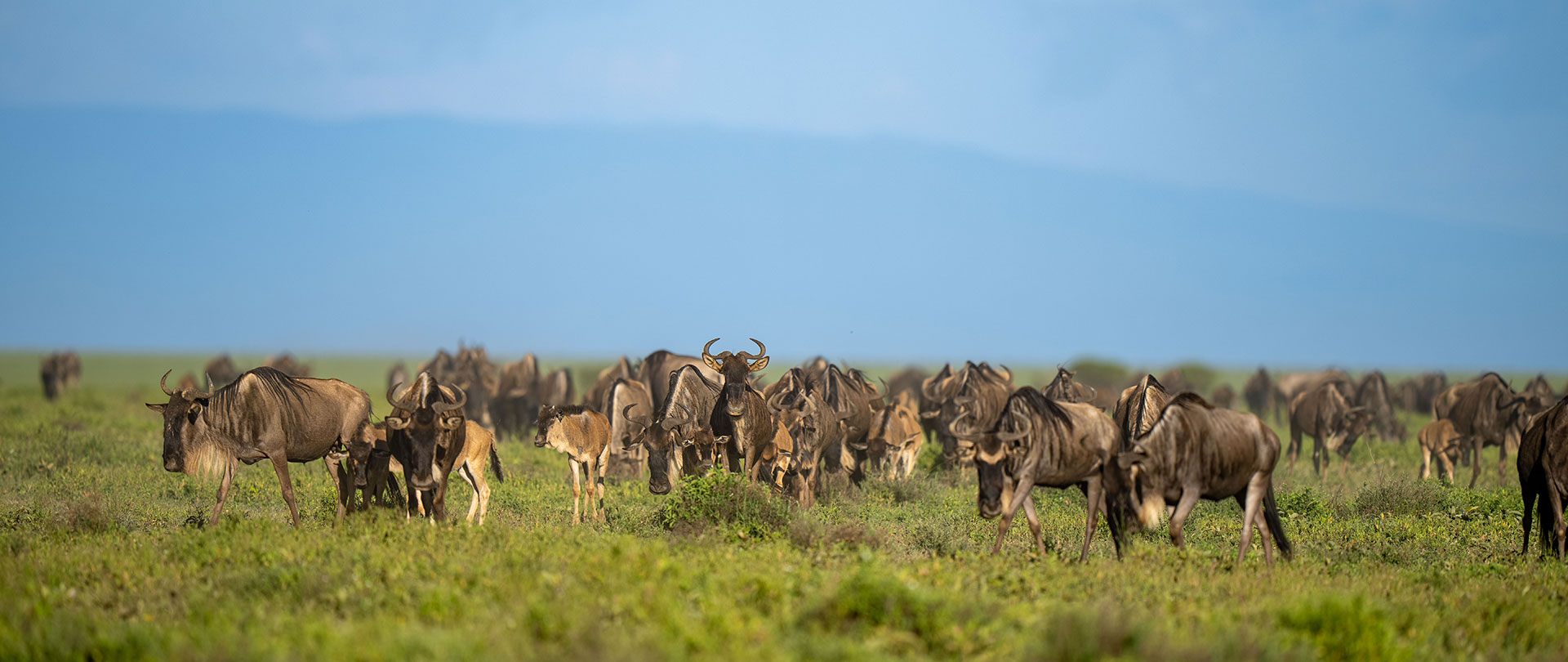
Serengeti National Park
- Home
- Serengeti National Park
Habitat
Northern Serengeti is a mix of iconic great savannah landscapes of tall and short grass plains, acacia woodlands, riverine forests, rocky outcrops, and plateaus. In between the rolling hills are rivers that are the lifeblood of the park including the mighty Mara River and Sand River flowing from north in Maasai Mara to Lake Victoria. The endless open plains of the southern Serengeti host the beginning of the life cycle of wildebeest and zebra. Wildebeest feast on the grassland savannah, a nutritionally rich land of clay soil. The area ranges from Acacia woodlands to the short-grass plains that attract the Great Migration. The beating heart of a magnificent ecosystem, Central Serengeti is the best place to go on a safari in Tanzania. The region is humming with wildlife. The area possesses a variety of habitats, ranging from swamps and rivers to kopjes and thick woodlands, which in turn nurture a variety of fauna.
Wildlife
The Serengeti offers some of the best wildlife viewing in Africa. All the major safari animals occur in great numbers. Cheetahs and four of the Big 5 are easily seen, but rhino sightings are rare, and only black rhino is present. Aside from the big cats, many other predators can be spotted including spotted hyenas (especially in the morning), jackals, and bat-eared foxes. The major highlight is the Migration that occurs all over the year in different parts of the Park.
The best time to visit
The best time to visit the Serengeti National Park is in the Dry season (from late June to October). This period offers the best wildlife viewing in general – with the wildebeest migration as its absolute highlight. Wildlife viewing is good throughout the year, but certain areas are better at specific times. The timing of the migration varies every year (the best chance of seeing it is during June and July) while the wildebeest calving is from late January to February.
Other destinations
Get Help
Our dedicated team of travel experts is here to assist you every step of the way, ensuring a seamless and unforgettable journey.